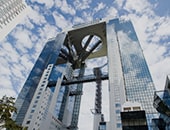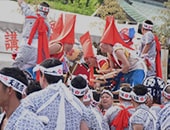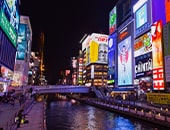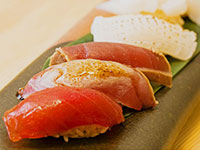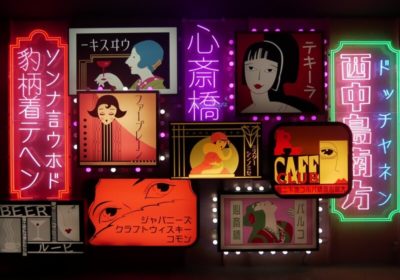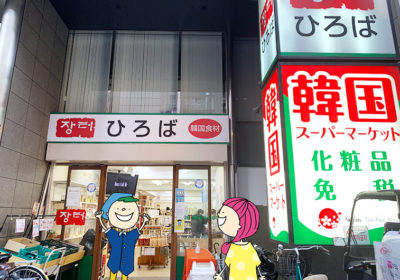

Supporter
A scenic Osaka spot where the sky, sea, and flowers meet—Nemophila Festival 2024
[目次]
■Again in 2024—The Nemophila Festival!

The Nemophila Festival is an annual spring event which Osaka people look forward to every year and it’s being held again in 2024!
This Nemophila Festival is one of the largest nemophila events in the Kansai region and it has been held since 2019, during the flowering season.
The venue, Osaka Maishima Seaside Park, originally became famous for its beautiful lily garden, but it was damaged by a typhoon and lost. It was then replanted as the nemophila field you see here today.
The garden has sweeping views of the sky and the sea. And when in bloom it’s blanketed in a field of delicate blue flowers. It’s a spectacular sight that looks like something out of a movie or anime. It has become famous on social media for its visual appeal and is considered a very Instagrammable spot, especially among women. And the Nemophila Festival has become a very popular event loved by many people.
So I would like to introduce some of the highlights, timing, and basic information so you can enjoy Nemophila Festival 2024♪
■What kind of flower is a Nemophila?
Recently, nemophila have been planted in parks all over Japan, so you may have heard of it before. A popular variety you may know is called by the common name—Baby blue eyes.
I’d like to look a little deeper into the characteristics of this flower so you’ll be able to appreciate the festival even more. Here’s what I found when I researched the flowering period, characteristics of the nemophila, botanical names, and more!
Flowering period and characteristics of nemophila
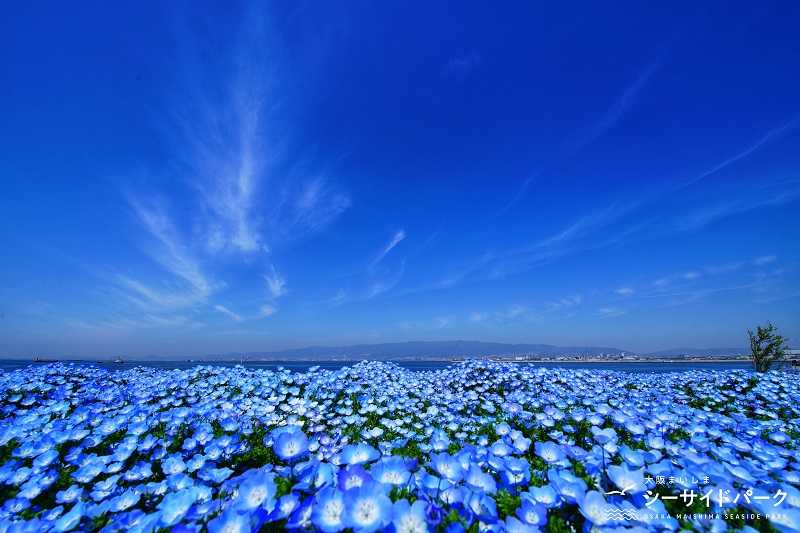
Nemophila are originally from North America! They are annual plants that blossom from March through May.
The plants are about 10 to 20 cm tall and the flowers are only 2 to 3 cm in diameter. The plant is characterized by its ability to spread and grow along the ground. And a single plant produces many flowers one after another. So as it grows, it transforms the landscape into a blue carpet of flowers.
The flower is known for its pale blue color, but there are many other unique and cute varieties such as a pure white flower, white flowers with black specks, and white petals with purple dots♡
The nemophila that grow at Osaka Maishima Seaside Park are a variety called Insignis Blue, which is reminiscent of a blue sky. In English, it is often called Baby blue eyes because of its small, pretty blue flowers.
What does Nemophila mean and signify?
The name Nemophila is a combination of the Greek words nemos, meaning little forest, and phileo, meaning to love. This name comes from the fact that the original species of nemophila grows in spots of bright sunlight near forests!
Nemophila are symbolic for innocence beauty, success in any place, and forgiveness.
Symbolic origin
The symbolism related to forgiveness comes from Greek mythology.
A beautiful woman named Nemophila lost her beloved husband and cried for days at the gates of the underworld, longing to see him again. In consideration for their love, a god took pity on the poor woman and transformed her into a single flower thus allowing her to meet her husband again.
The flower’s connotation of forgiveness comes from this heartbreaking love story.
It is said that the connection with success anywhere, comes from the strong vitality of nemophila. They are were able to firmly taken root in Europe after being introduced from their native home in America. And of course the association with innocent beauty comes from the flower’s cute appearance.
■Fun at Osaka Maishima Seaside Park
One million nemophila plants fill an area that is approximately 36,000 square meters in size!
And there are many more fun things to do at Osaka Maishima Seaside Park. See the map below for ideas.

In addition to flowers, there are buggies, paragliding, and a kids’ park in the area where the beautiful nemophila flowers bloom. And there is a souvenir corner!
After viewing the flowers, you can enjoy a little outdoor exercise and fun activities, pick up a souvenir, and try some of the delicious food♪

There is also a special photo service near the exit to the park where you can take a commemorative photo with Nemo Nyan, the official character for the festival. Take a photo to remember your trip!
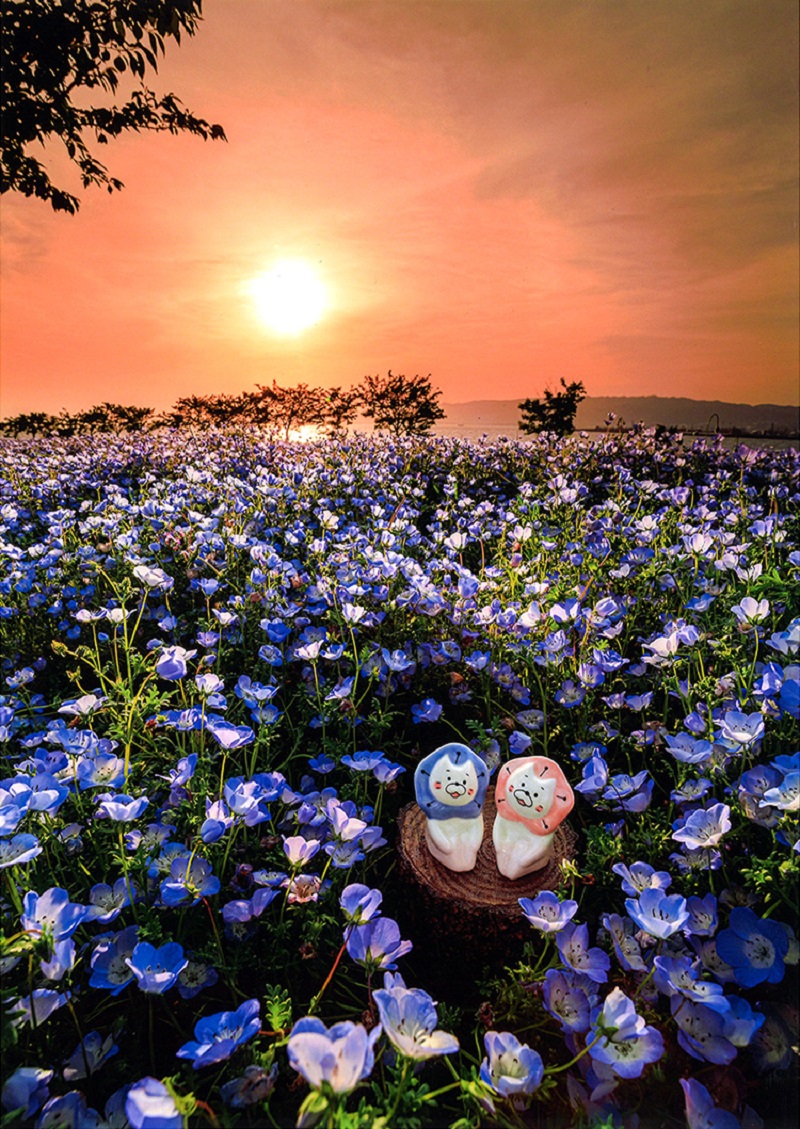
▲The winning photo from the photo contest
And there is a photo contest held during the event, so if you are into photography, take a look at the official website for more details!
■5 highlights of the Nemophila Festival!
Here are some of my favorite parts about the Nemophila Festival that I recommend you look for when you visit.
A blue world created by the sky, the sea, and one million nemophila♡
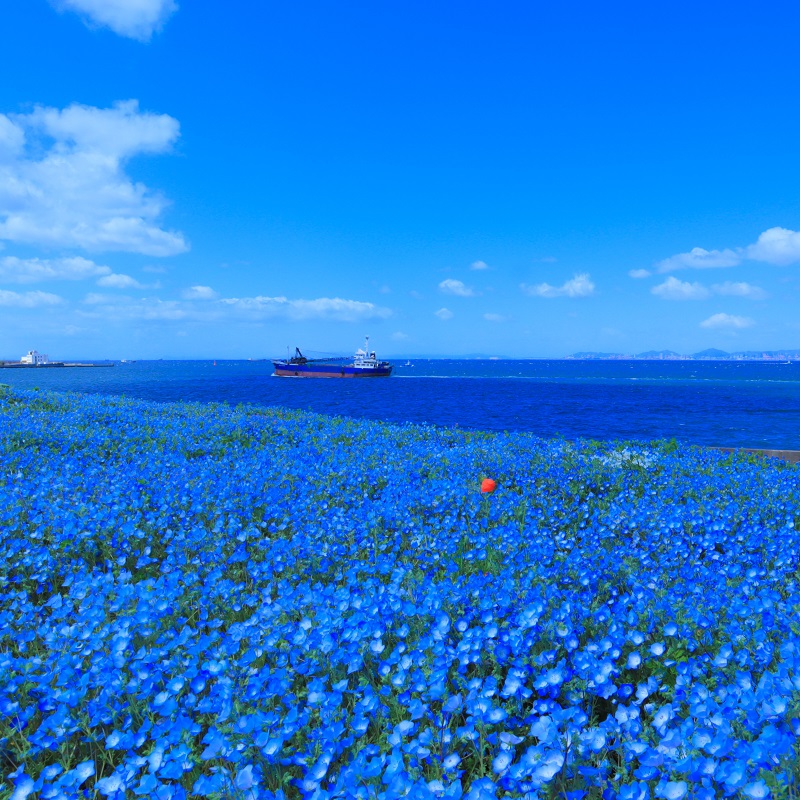
The combination of sky, sea, and nemophila at Maishima Seaside Park create the perfect trio! When you look out over the blue world, your daily fatigue seems to melt away and you get a sense of calm.
A combination of flowers—cherry blossoms and tulips❀

There are also places where you can see cherry blossoms and tulips amongst the nemophila to create an entirely different yet equally beautiful picture!
The refreshing pale pink cherry blossoms and platinum blue nemophila give you a strong impression that spring has arrived. This is an irresistible photo spot for flower lovers.

The contrast between the vibrant tulips and the pale blue nemophila is absolutely beautiful♡
Find the official character Nemo Nyan!

Nemo Nyan, the official Nemophila Festival character, is great at hide-and-seek!
And Nemo Nyan is hiding in the Nemophila field somewhere. Please look for them with your family, friends, or partner♪
Limited gourmet food and sweets that can only be found here
Food trucks will be at the Nemophila Festival venue on Saturdays, Sundays, and holidays, so you can grab some delicious food from a variety of choices. It’s such a treat to be able to enjoy Osaka food and sweets in such a spectacular location♪
Additionally, there are a variety of special sweets and drinks that are only available during the Nemophila Festival and will be on sale during the event!

The image on the left is the Blue Eye ice cream, a blue soft serve created to look like the blue trio of ocean, sky and nemophila.
In the middle is a refreshing Blue Parfait complimented with fruit and nata de coco.
And on the right is a Nemonade, a delicious signature drink served with fruit.
Nemophila-colored sweets and drinks are sure to put you in a refreshing spring mood ☆

There will also be cute baby castella (bite-sized cakes) in the shape of Nemo Nyan.
It’s a special treat that you can only buy here ♡
End the day with Nemophila illuminated by the setting sun

In fact, Maishima is a well-known place to watch beautiful sunsets and it has been chosen as one of Japan’s top 100 sunset spots.
Maishima’s sunset looks different every day, but during the festival you can enjoy the special sunset scenery in combination with Nemophila. The soft pastel colored sky and the sprawling nemophila blue will soothe your heart and your mind♪

Business hours are extended on Saturdays, Sundays, and holidays during the event period so that you can enjoy the sunset.
I recommend planning your visit for the late afternoon so you can stay until evening and see both blue and red skies!
■When is the Nemophila Festival? And how much does it cost?
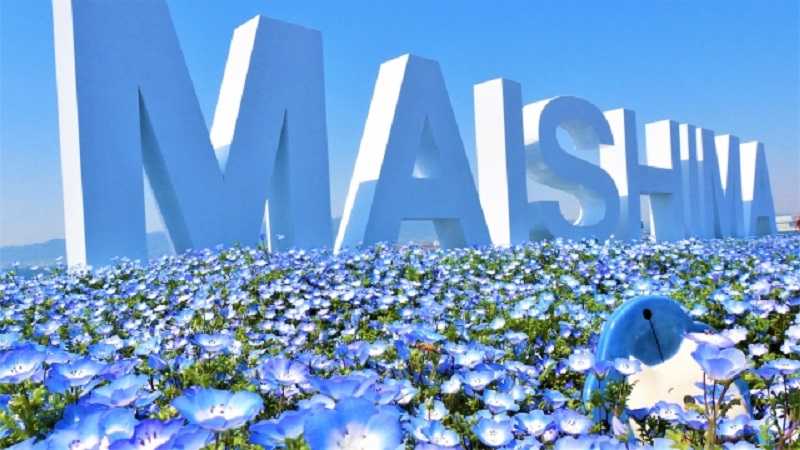
▶Event period:
Saturday, April 6, 2024–Monday (holiday) May 6, 2024
▶Hours:
(Weekdays) 10:00–17:00 (last admission 16:30)
(Saturdays, Sundays, & holidays) 9:00–18:30 (last admission 18:00)
(May 6) 9:00–17:00 (Last entry 16:30)
▶Entrance fee
General admission:
Adults (high school students & above) 1,500 yen
Children (elementary and junior high school students) 500 yen
Group rate (20 people or more):
Adults (high school students and above) 1,000 yen on weekdays, 1,300 yen on weekends and holidays
Children (elementary and junior high school students) 500 yen
Visitors with disabilities:
Adults (high school students and above) 500 yen
Children (junior high school students and under) free
Accompanying person (up to 1 person) 500 yen (general fee from 2nd person onwards)
*Payment is by cash or PayPay only.
*All prices shown include tax.
▶Access (by train/bus)
From JR Osaka Loop Line/Hanshin Namba Line transfer at Nishikujo Station to the JR Yumesaki Line. Get off at Sakurajima Station
↓
Take the Maishima Active Bus (Hokko Kanko Bus)
↓
Get off at Hotel Lodge Maishima-mae
(Required time) : Approximately 15 minutes
From Osaka Metro Chuo Line Cosmo Square Station
↓
Take the Cosmo Dream Line (Hokko Tourist Bus)
↓
Get off at Hotel Lodge Maishima-mae
(Required time: Approximately 20 minutes
From JR Osaka Loop Line/Hanshin Namba Line Nishikujo Station
↓
Take Osaka City Bus Route 81 (bound for Maishima Sports Island)
↓
Get off at Maishima Sports Island
(Required time: Approximately 35 minutes)
▶Access (by car)
・Approximately 5 minutes from the Wangan-Maishima exit of Hanshin Expressway No. 5 Wangan Line
・Approximately 15 minutes west of the Umeka intersection on National Route 43
・Approximately 5 minutes from the Nanko (Sakishima) direction after passing through the Yumesaki Tunnel
*Search for Maishima Ceramics Museum (TEL. 06-6463-7282) on your navigation system.
*From Konohana Bridge, turn left at the intersection in front of Ookini Arena Maishima
and proceed along the road (clockwise) to the designated parking lot for the Osaka Maishima Seaside Park Nemophila Festival.
(Regarding the designated parking lot)
Parking lot hours
(Weekdays) 9:00-17:30
(Saturdays, Sundays, & holidays) 8:00-19:00
*On the last day, May 6th, the lot closes at 17:30
Capacity
1,800 spaces
Standard-sized cars: 1,000 yen/vehicle
Medium/large vehicle: 2,000 yen/vehicle
Motorcycle/bicycle: free
*Please use the designated parking spaces.
■Osaka Spring is almost here♪

This year’s cold winter is coming to an end. And spring is fast-approaching in Osaka.
Why not take this chance to spend a day in the platinum blue world of the Nemophila Festival? Make space to let go of any fatigue from your busy life and enjoy the extraordinary healing powers of this field of blue!
Take a trip to Osaka Maishima Seaside Park this spring!
 Look Beyond the Cherry Blossoms A Guide to Osaka’s Spring Flower Hotspots
Look Beyond the Cherry Blossoms A Guide to Osaka’s Spring Flower Hotspots

Supporter
The contents of this page were current at the time it was posted, but may differ from the present.
Text visible in this map is based on information from Map Tiler and may differ from actual geographical names.


